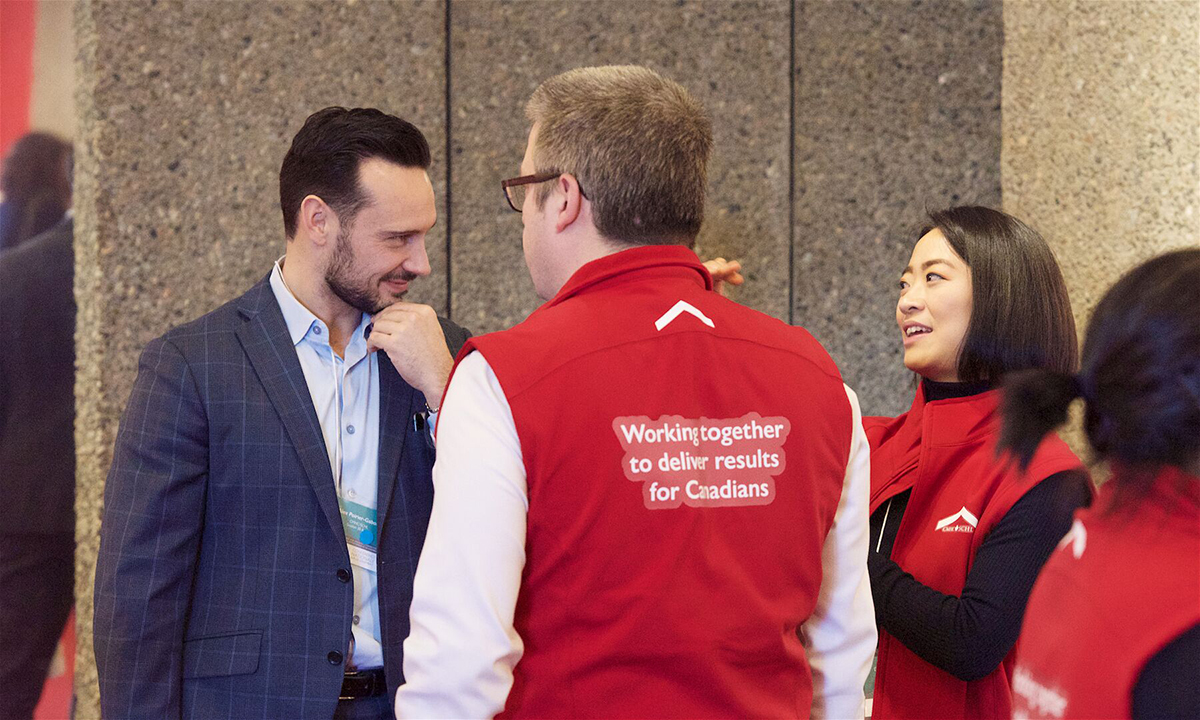
Working Together to Achieve Housing Affordability for All Canadians
June 4, 2019 — The Big Picture
Last year, Canada Mortgage and Housing Corporation (CMHC) launched a new corporate strategy centered around an audacious goal – by 2030, everyone in Canada will have a home they can afford and that meets their needs. This aspiration, truly a stretch, requires us to think differently about what we do. Dreaming big will motivate us to innovate, work in new ways, and be far more creative in our thinking about housing.
CMHC’s work on Canada’s first-ever National Housing Strategy (NHS) is central to how we’ll reach our aspiration. The NHS sets the wheels in motion for re-imagining how we can make housing affordable for every Canadian. It reinforces the notion that collaboration is key, and that to reach our goals we cannot act alone. One of our initiatives under the NHS is the National Housing Conference – a forum to discuss challenges and explore solutions with housing stakeholders from across Canada and the world. A key takeaway from our inaugural conference was that to innovate is to collaborate – fostering and developing good relationships and partnerships is key to solving our housing problems.

Collaboration and innovation are mutually reinforcing processes. Municipal representatives made clear that the key to successfully addressing their housing problems involved collaborating internally across departments, but also externally with stakeholders outside government (housing providers, community organizations)[1]. And in a research-led presentation on municipal approaches to solving housing problems, it was highlighted the strongest, innovative programs were made possible through good relationships and partnerships (across sectors and orders of government).[2]
Collaboration amongst orders of government to generate innovative housing solutions is important. New planning tools, such as inclusionary zoning and rental-only zoning – both of which require changes to provincial planning acts before deployment at the municipal level – are only made possible through provincial-municipal collaboration. Generally, intergovernmental collaboration ensured programs or policies across different orders don’t operate at cross purposes with one another[6].
Many innovative financing models to generate affordable and sustainable housing outcomes were made possible through partnerships between the public and private sectors. Examples from selected international contexts include: new ways of delivering loans, grants, and financing for affordable housing (such as The National Housing Finance and Investment Corporation (NHFIC) in Australia); energy efficient mortgages that can increase the efficiency of dwellings while reducing energy poverty (EU pilot); and financing mortgages for lower income households (through Fair Housing Initiatives Program in Mexico) [7].

The ultimate form of collaboration is between professionals in charge of planning, design, and policy making, and the people for whom those decisions are made (especially people with lived experience[8],[9]). This is essential to furthering social inclusion[10].
Achieving adequate, affordable housing for everyone in Canada is a daunting task, and the federal government cannot afford to act alone. We also need to mobilize the non-profit and co-operative housing sectors to focus our combined energies with provincial, territorial and municipal governments, philanthropists, lenders, developers, social entrepreneurs, and those with lived experience of housing needs on the future of housing.
If you’d like to join the conversation we started at the National Housing Conference, you can sign up to be a part of our Expert Community on Housing (ECoH) – a collaborative, online network of housing experts created to share housing knowledge and to contribute to the development of housing solutions.
[1.] Selinger, in “Exploring solutions to supply in housing markets”
[2] Ren, in “The life and death of smart growth: Will a lack of demand kill high density plans?”
[3] “The life and death of smart growth: Will a lack of demand kill high density plans?”
[4] “Reaching Home: A new federal response to homelessness in Canada”
[5] Bailão , in Aalbers, McCarney, Geller, and Bailão, “Designing global cities: Planning solutions to population growth, affordability and inequalities”
[6] “All housing is social housing”
[7] Nash, Lawson, Léboullenger, de Jesus Gómez Dorantes, and Stevens, “It takes two: How government and capital markets can boost affordability and choice”
[8] Cardinal, “Creating socially inclusive communities through people-centred planning, design and architecture”
[9] “All housing is social housing”
[10] Cardinal, “Creating socially inclusive communities through people-centred planning, design and architecture”